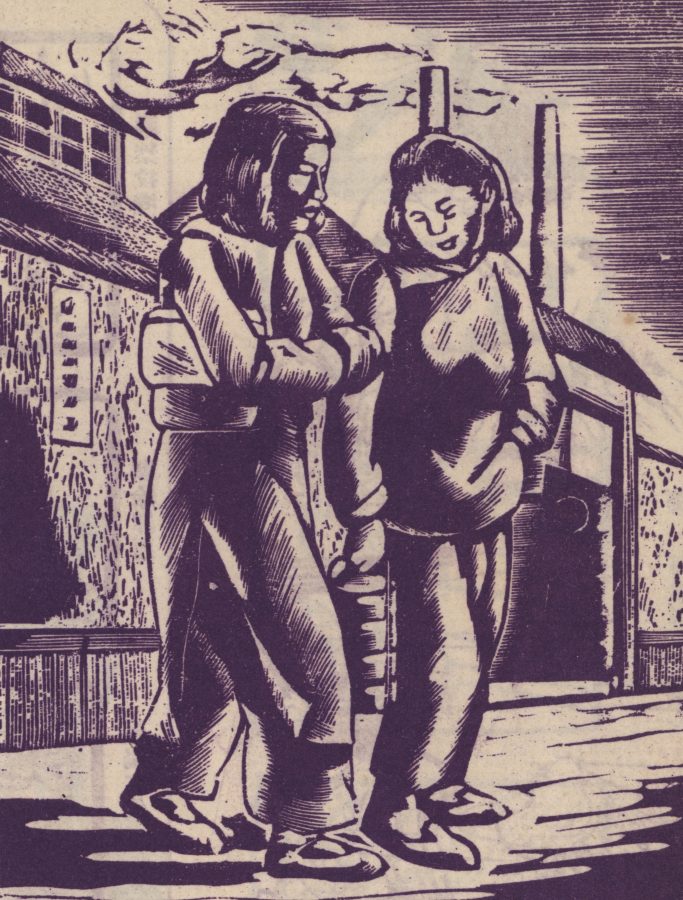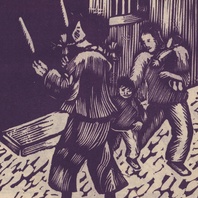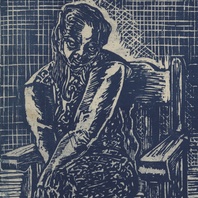
Description
Woodcut depiction of two workers on their way to a factory in occupied Shanghai.
Shang gong (Off to work)
This woodcut, by an artist called Gu Yihua, was reproduced in Zhonghua huabao (Chinese Pictorial) 1.4 (November 1943). The importance of the muke (woodcut) form to artistic practice in occupied China has been almost entirely overlooked in the literature. The muke form has hitherto been almost exclusively associated with the art of resistance in China, despite being an important part of “occupation” visual cultures throughout the war.
Date
- November 1943
Artist/Creator
Gu Yihua 顧藝華
Medium
-
Woodcut
-
Theme
- New Citizens Movement
Case Studies
-
Japanese-occupied China
(1937 – 1945) Keywords
- factory, women, work
Further information
Source
Source Reference Details
Modern Documents Reading Room
Permissions/Acknowledgements
Shanghai Library
COTCA Identifier
SL-0004

